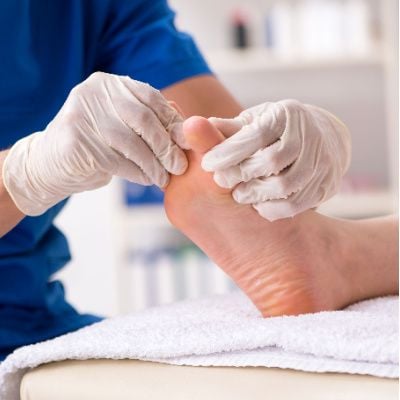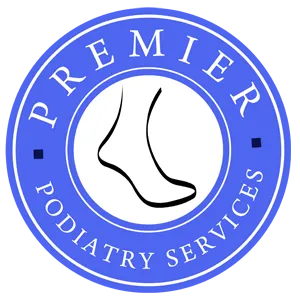 Enchondroma, which may sound unfamiliar to many, represents a benign bone tumor arising from cartilage. While generally non-threatening, this condition holds unique characteristics that warrant understanding. In this comprehensive guide, we embark on a journey to demystify Enchondroma, exploring its origins, clinical presentation, diagnostic methods, and treatment options. We aim to provide a detailed and accessible resource for medical professionals and the general audience.
Enchondroma, which may sound unfamiliar to many, represents a benign bone tumor arising from cartilage. While generally non-threatening, this condition holds unique characteristics that warrant understanding. In this comprehensive guide, we embark on a journey to demystify Enchondroma, exploring its origins, clinical presentation, diagnostic methods, and treatment options. We aim to provide a detailed and accessible resource for medical professionals and the general audience.
Defining Enchondroma
The Nature of Enchondroma:
Enchondroma is a benign tumor that originates in the cartilage found within the bones. This section delves into the specific cellular components and growth patterns that define Enchondroma, setting the stage for a deeper understanding of this unique condition.
Occurrence and Prevalence:
While Enchondromas are generally considered rare, they can occur in various bones throughout the body. We explore the prevalence of Enchondroma across different age groups, highlighting common locations for tumor development.
Types and Variants
Solitary Enchondroma:
Solitary Enchondroma refers to a single, well-defined tumor within a bone. This subsection provides insights into the characteristics of solitary Enchondromas, including their typical locations and clinical implications.
Ollier's Disease:
Ollier's Disease is a unique variant of Enchondroma characterized by multiple tumors affecting multiple bones. We explore the distinct features of Ollier's Disease, emphasizing its impact on bone structure and growth.
Maffucci Syndrome:
Maffucci Syndrome is another rare variant of Enchondroma, often associated with soft tissue hemangiomas. This section delves into the complexities of Maffucci Syndrome, highlighting its potential implications for affected individuals.
Causes and Risk Factors
Genetic Factors:
While the exact cause of Enchondroma remains elusive, genetic factors are believed to play a role. We explore the current understanding of the genetic basis of Enchondroma, including potential gene mutations associated with tumor development.
Somatic Mutations:
Somatic mutations, alterations occurring within non-reproductive cells, are vital contributors to Enchondroma. This subsection discusses the impact of somatic mutations on cartilage cells and their role in the initiation of tumor growth.
Signs and Symptoms of Enchondroma
Asymptomatic Nature:
Enchondromas are often asymptomatic, meaning they may not cause noticeable symptoms. We discuss Enchondroma's silent progression and its challenges in terms of early detection.
Pain and Swelling:
In some cases, Enchondromas can manifest with pain and swelling. This section explores the factors contributing to these symptoms, including tumor size, location, and potential complications.
Fracture Risk:
Large or rapidly growing Enchondromas may increase the risk of fractures. We delve into the mechanisms by which Enchondromas compromise bone integrity, leading to fractures and potential functional limitations.
Diagnosing Enchondroma
Imaging Studies:
Accurate diagnosis of Enchondroma often involves various imaging studies. We explore the role of X-rays, CT scans, and MRI in visualizing Enchondromas, highlighting the specific features that aid diagnosis.
Biopsy Procedures:
In some instances, a biopsy may be necessary to confirm the diagnosis of Enchondroma and rule out more aggressive conditions. This subsection provides insights into the biopsy process and its role in determining the nature of the tumor.
Differential Diagnosis
Chondrosarcoma:
Chondrosarcoma, a malignant form of cartilage tumor, is a critical differential diagnosis for Enchondroma. We explore the distinguishing features between these two conditions and the importance of accurate differentiation for treatment planning.
Bone Cysts and Other Benign Lesions:
Enchondroma shares similarities with other benign bone lesions, including bone cysts. This section outlines the distinctive characteristics that aid in distinguishing Enchondroma from similar conditions.
Treatment Approaches
Observation and Monitoring:
Asymptomatic Enchondromas may require only observation and regular monitoring. We discuss the criteria for adopting a watchful waiting approach and the importance of ongoing assessments to track tumor progression.
Surgical Interventions:
Surgical intervention may be recommended for symptomatic or rapidly growing Enchondromas. This subsection explores various surgical techniques, including curettage, bone grafting, and, in rare cases, amputation.
Prognosis and Long-Term Outlook
Recurrence Risk:
While Enchondromas are generally benign, there is a risk of recurrence following surgical treatment. We discuss the factors contributing to recurrence and the implications for long-term prognosis.
Functional Implications:
The impact of Enchondroma on an individual's daily life and functional abilities varies. This section explores the potential practical implications, emphasizing the importance of personalized care plans.
Coping with Enchondroma: A Holistic Approach
Psychological Support:
Receiving a diagnosis of Enchondroma can have emotional implications. This section explores the importance of psychological support, counseling, and community engagement in fostering resilience and well-being.
Lifestyle Adaptations:
Adapting to life with Enchondroma involves considering lifestyle modifications. We provide practical tips for managing daily activities, addressing pain, and enhancing overall quality of life.
Ongoing Research and Advances
Current Research Initiatives:
Ongoing research endeavors are contributing to a deeper understanding of Enchondroma. We provide insights into current studies that unravel this condition's genetic and molecular aspects.
Potential Therapeutic Advances:
Emerging therapeutic approaches may shape the future of Enchondroma management. This subsection explores potential advancements in treatment modalities and their implications for improved patient outcomes.
Conclusion
Enchondroma, though often benign, demands a nuanced approach to diagnosis and management. This comprehensive guide seeks to empower individuals, families, and healthcare professionals with a thorough understanding of Enchondroma, from its origins and clinical presentation to available treatment options and ongoing research initiatives. By fostering awareness and collaborative care, we aim to navigate the complexities of Enchondroma and work towards enhancing the lives of those affected by this distinctive bone tumor.
Disclaimer:
The information on this website is provided for educational and information purposes only and is not medical advice. Always consult with a licensed medical provider and follow their recommendations regardless of what you read on this website. If you think you are having a medical emergency, dial 911 or go to the nearest emergency room. Links to other third-party websites are provided for your convenience only. If you decide to access any of the third-party websites, you do so entirely at your own risk and subject to the terms of use for those websites. Neither Premier Podiatry Services, Ltd, nor any contributor to this website, makes any representation, express or implied, regarding the information provided on this website or any information you may access on a third-party website using a link. Use of this website does not establish a doctor-patient relationship. If you would like to request an appointment with a health care provider, please call our office at (773) 866-9800.
